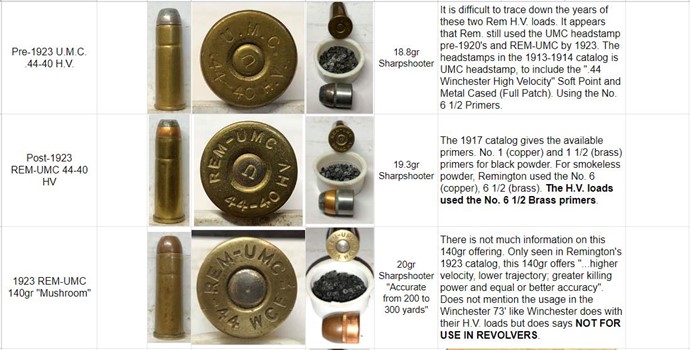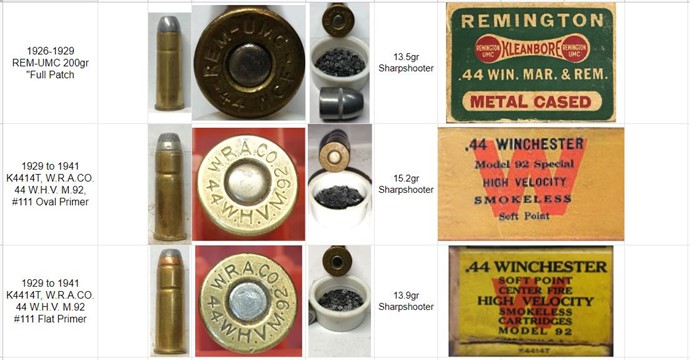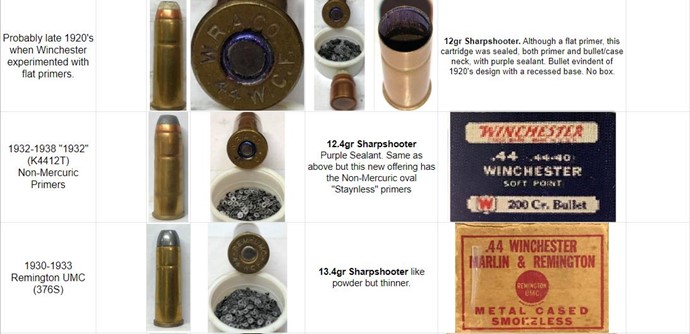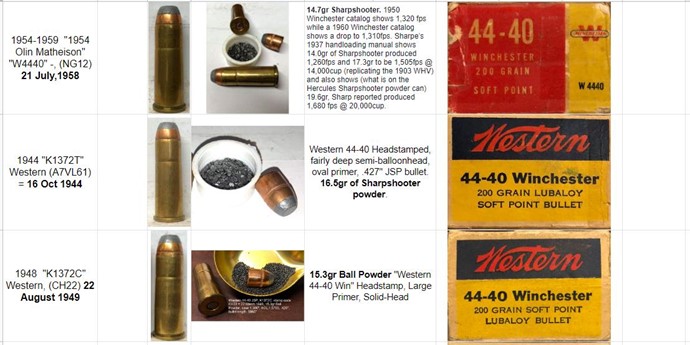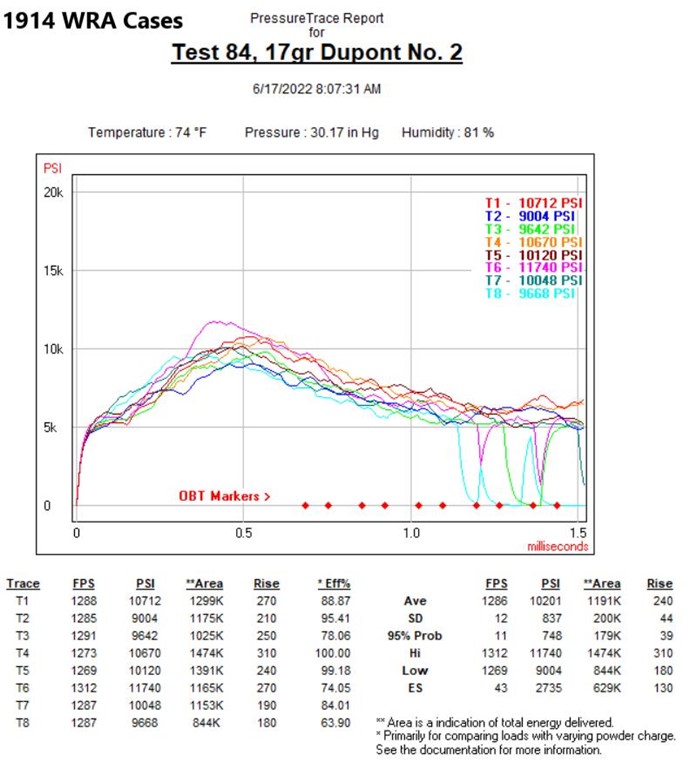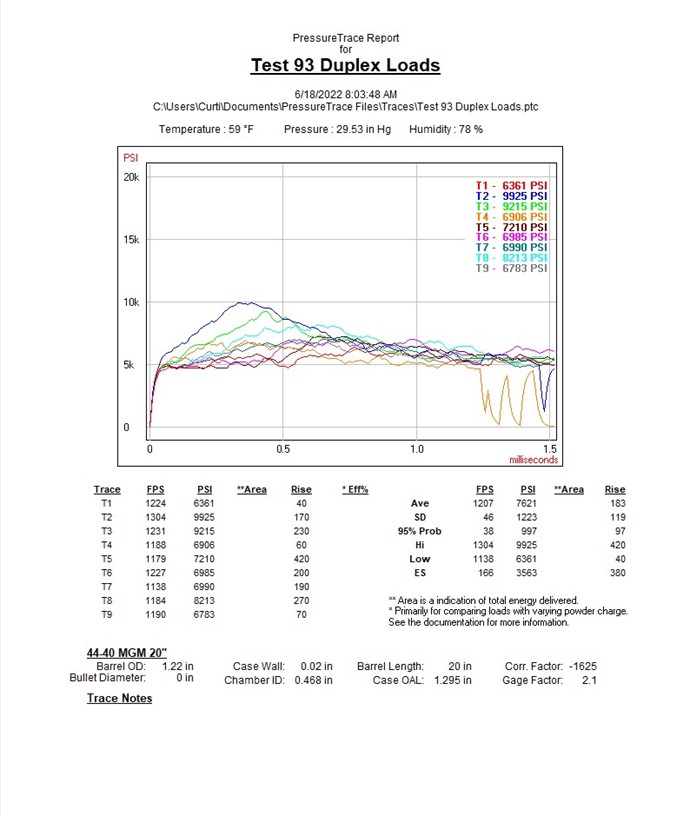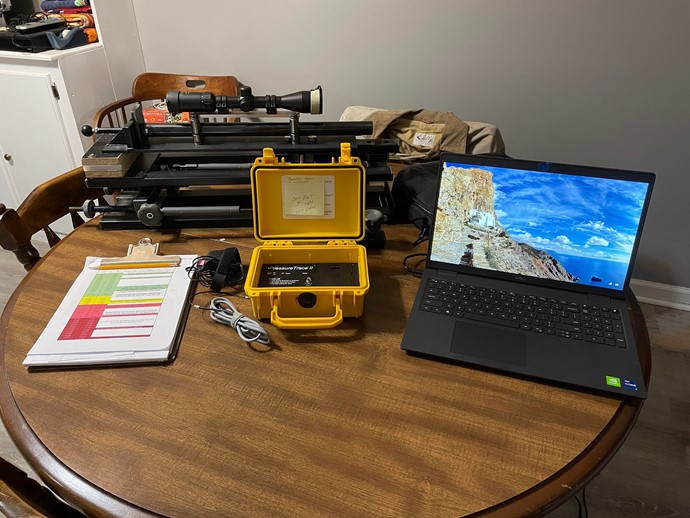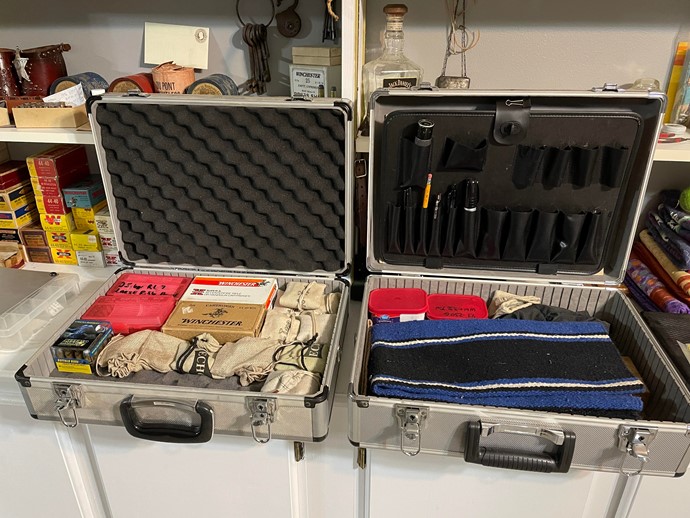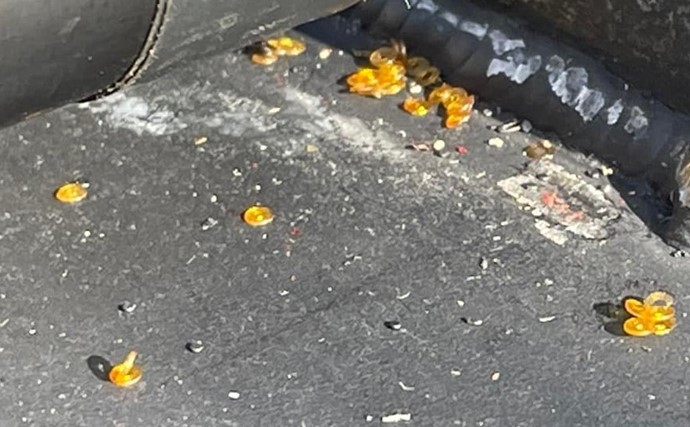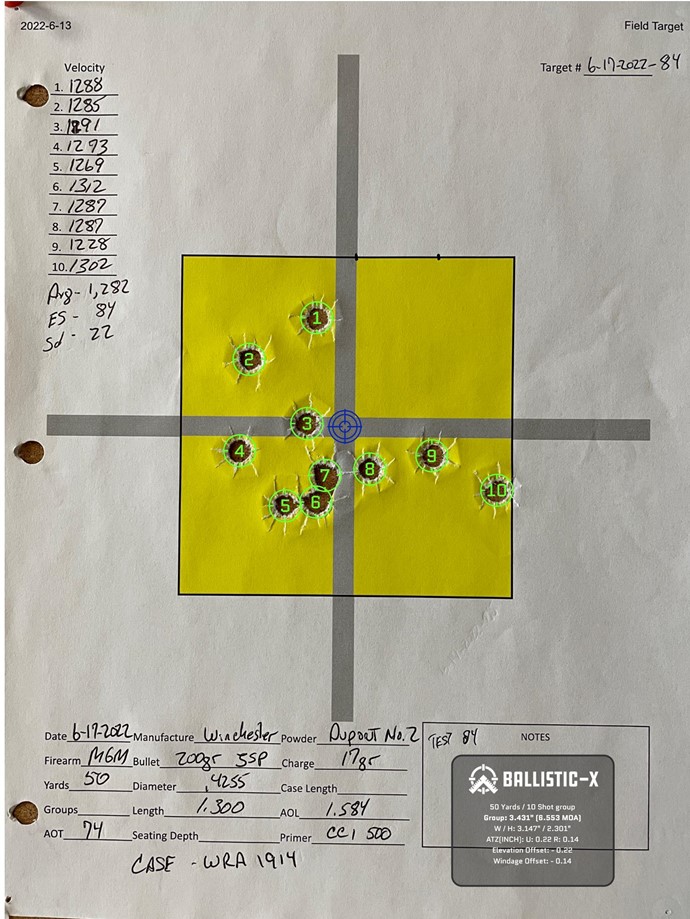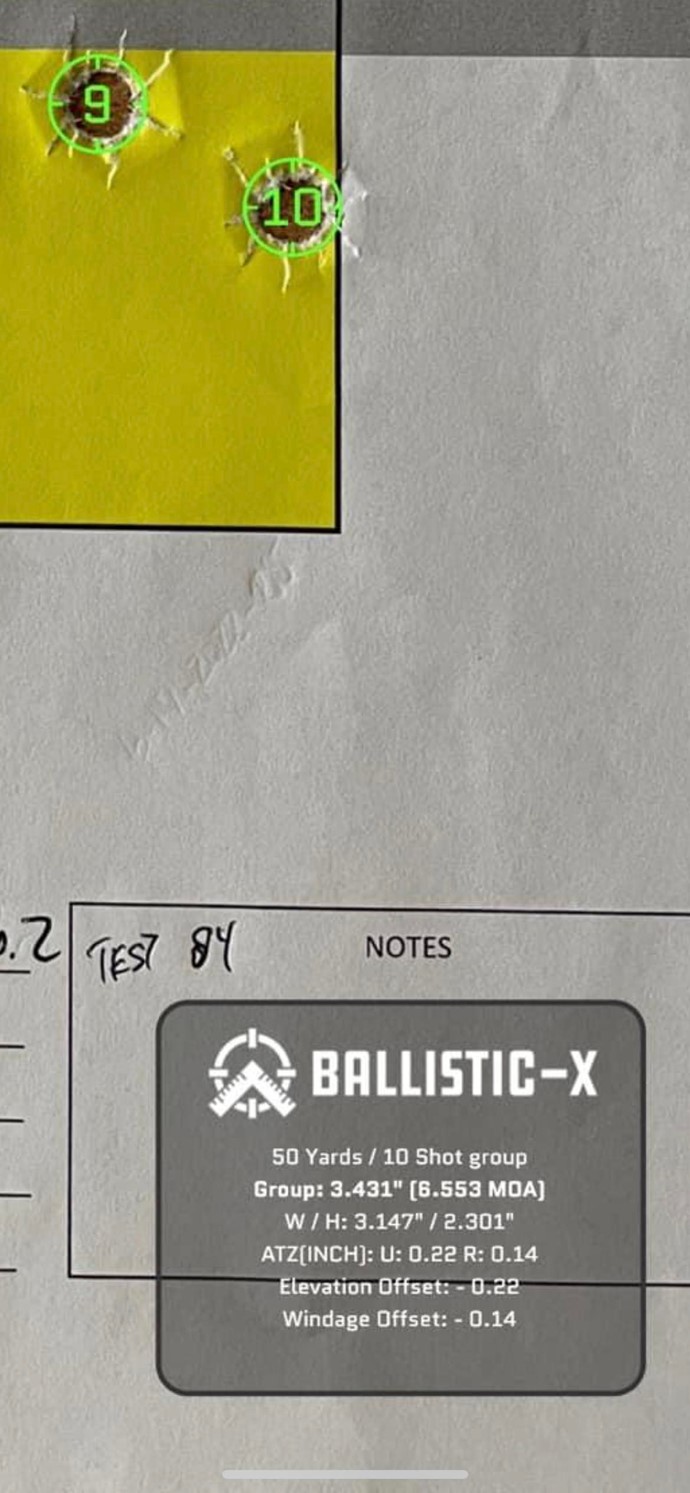With all the pressure testing that has been done over the past few years, I decided to conduct at least 8 more tests. With what we do have now, there is enough data to show a relative linage between CUP and PSI now for the 44-40. We still have a few missing links that could use some closure.
I tried to simplify what I have done the best I could in the following charts. These charts are always subject to updates based on better and more reliable data and are subject to change without notice.
They can be seen here: Click the tabs at the bottom of the charts.
For years I have seen reports to indicate that the 44 High Velocity loads produced 22,000cup. However, this February 14th, 1917 document below may indicate otherwise. It looks as if the WRA Cartridge Engineering Office documented 18,000cup service pressures and 23,500cup Proof Pressures. Looking at cartridge examples from the Draw Set to late production, the only component that looks to have changed is the primer. The WRA "Balloon Pocket" appears to be the same through the late 1930's. The powder charge dropped from 20gr down to 13.9 in some examples while the velocities advertised an increase. From 1,500fps in 1903, to 1,564 by 1925 and to 1,570fps by 1938.
This also shows the earliest documentation, I have seen, that the normal loads have a service pressure of 13,000cup and a Proof Pressure of 16,500cup. Keep in mind that these normal loads used between 13gr and 17gr of Dupont No. 2 rifle powder since 1895 and was used until 1925, thus this Service Pressure directly relates to this particular powder and load for this cartridge. Black powder was still offered during this time and the document does not stated any difference between black powder and smokeless powder loads. Certainly with the information therein, they are referring to smokeless loads.
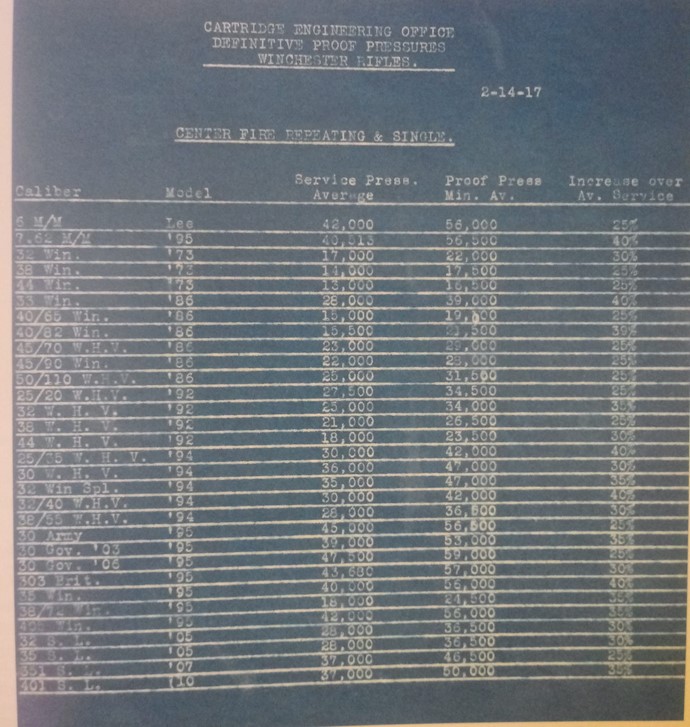
Simply put, Winchester loaded their cartridges to Service Pressure loads, but over time they seem to downgrade performance.
Below, Sharp's "Sharpshooter Powder" handloading data does not indicate a "max" load but lists loads that exceed 13,000cup as well as 18,000cup loads. Loads with a Service Pressure of 13,000cup are listed but pressures not noted. Load pressures of 14,000cup and higher are listed and noted. Winchester started using Sharpshooter powder in 1903 for their 44 WHV loads but switched from Dupont No. 2 to Sharpshooter by 1926 for all 44-40 smokeless loads.
Testing the following Sharpshooter, and in other charts Dupont No. 2, will not be easy and several obstacles could hinder accurate results. Cases used will be period cases but new primers will be used as well as the Winchester bullets where needed.
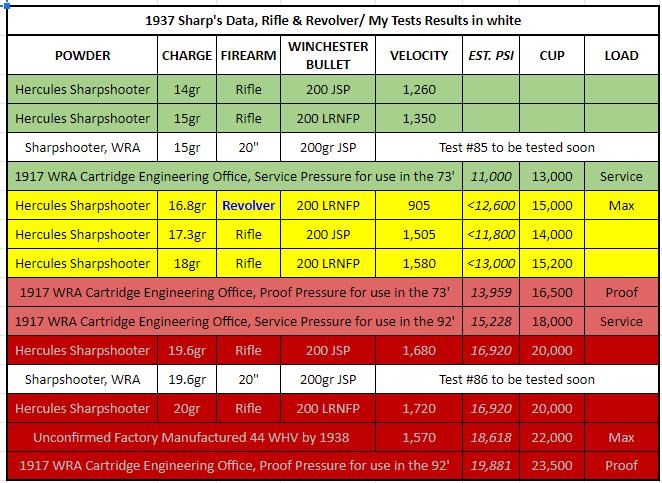
With the above tests results, if successful, the below chart can be updated to give even better data and cup/psi comparisons. Hopefully we can get a better idea what the 1914 era HV loads actually produced.
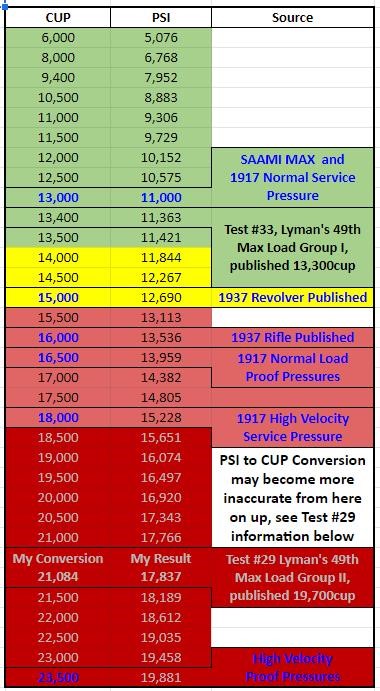
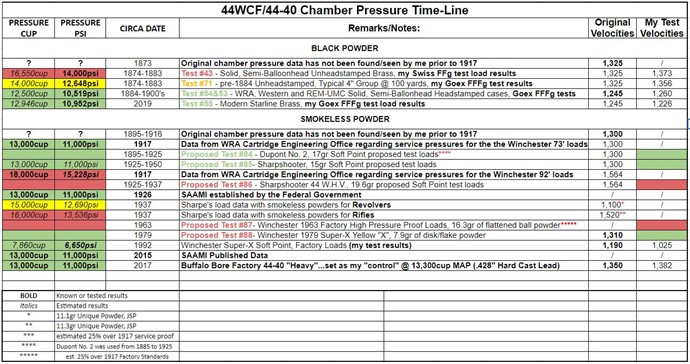
It may take a week or so before I can get the tests done, but this will give something to ponder over until then.
44-40 Website - https://sites.google.com/view/44winchester/chasing-the-44-40


